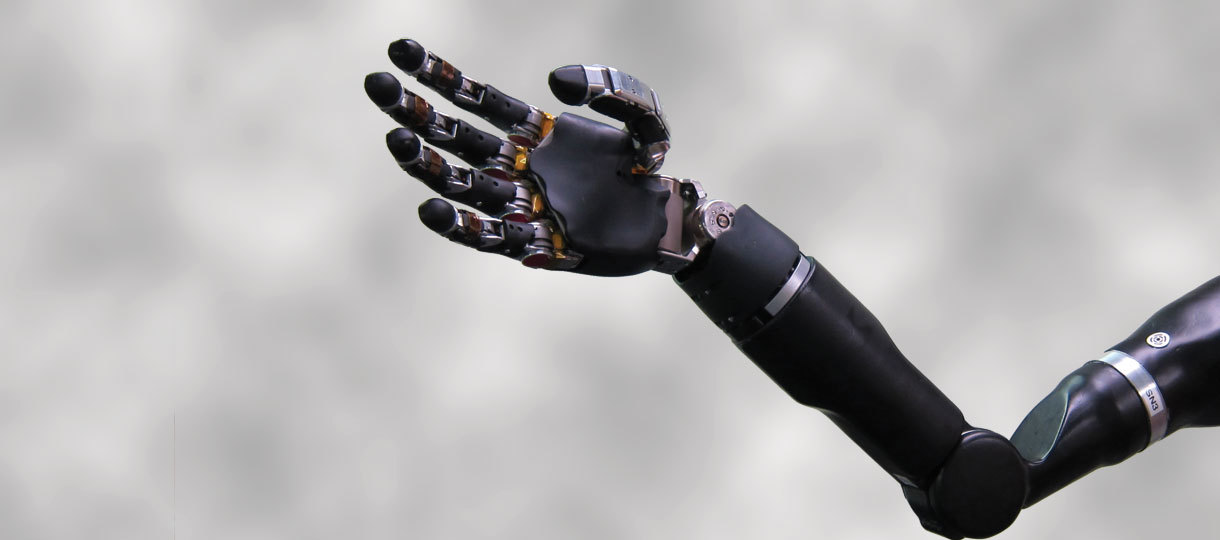Prosthetics

HDT has built many of these advanced prosthetic arms, developed for the Defense Advanced Research Projects Agency (DARPA), the premier U.S. agency in funding barrier-breaking advanced technologies.
For DARPA’s Revolutionizing Prosthetics Program, HDT created the world’s most advanced prosthetic arm and hand. Currently used in research, this prosthetic limb:
- Has nearly the same dexterity as a human limb, including moving with all of the degrees of freedom of a human arm and hand
- Is nearly the same size and weight of a human limb
- Is strong enough to curl a 50 lb (22.6 kg) bar bell
- Is fast enough to throw a ball
- Is completely modular, enabling it to integrate in at whatever point the original limb was lost
Ongoing research is being conducted to solve the challenge of how patients can control an arm that is able to return almost all of their dexterity and strength.
- Integrating such sophisticated control into a patient’s nervous system is not easy
- Experiments are currently taking place using deep neural implants that are surgically placed in the brains of quadriplegic volunteers. Watch the video (at the bottom of this page) showing the remarkable story of one of these patients.
- Work is also being done on grafting the nerves that used to control the arm into small bundles of muscle in the patient’s shoulder. Shallow electrodes are used to sense when, and how strongly, the muscles are activated. These signals are used to control the prosthetic arm.
While all of this research continues, HDT also is working with traditional prosthetics companies to integrate our very lightweight and powerful actuators into their current prosthetic devices. By integrating the HDT actuators these companies can make their prosthetics lighter, stronger, and more responsive.
You can see videos of the prosthetic arm in action on our video page.
